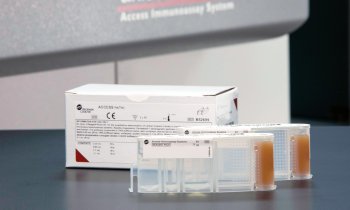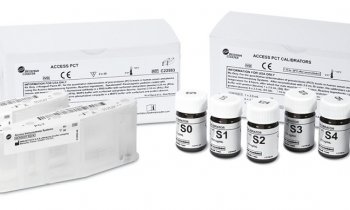Diagnostics
Reimbursement rates must be negotiated
Last October the Association of the German Diagnostics Industry (VDGH) warned that the proposed EU regulation on in vitro diagnostic medical devices will increase production costs. Simultaneously with the Brussels proposal publication, the German Federal Ministry of Health presented a draft fees regulation that includes significant increases and several new fees, inter alia the minimum fee for the classification of medical products is set to rise from currently €200 to €1,400.
Interview: Walter Depner

Is it a coincidence that Brussels and Berlin presented draft regulations at the same time, or was this a planned action?
‘The EU IVD draft regulation is – in some aspects massive – a tightening of current legislation that will cause significant cost increases for manufacturers. For a five-year product approval term, additional costs are estimated to amount to about €500 million Europe-wide. The industry, to be sure, supports the basic approach of the draft regulation, namely to enhance – within the existing legal framework – legal certainty and European harmonisation of laws in order to increase patient safety. ‘We do support legislation, because we know that we need people to trust our products; but we as manufacturers also need to be sure we can trust the system of market access, market surveillance and market control. What we simply cannot support are measures that increase bureaucracy rather than safety.’
‘The draft fees regulation by the German Ministry of Health proposes drastic fee increases and new fees. The extreme increase of the minimum fee is entirely unreasonable. The Ministry argued that classification decisions often involve complex review processes to determine whether a product is a medical, pharmaceutical or cosmetics product.
‘The EU draft IVD regulation proposes a new classification system that will trigger more classification inquiries with the manufacturers. However, classification inquiries regarding an IVD product cannot be compared to those regarding complex medical or combination products. VDGH proposes to maintain the current fee of €200. A new fee of €160 is envisaged to report relevant incidents in connection with new IVD product tests. We consider the introduction of this new fee unjustified since law requires notification. Also, the majority of these notifications are not related to a specific product.
‘During performance reviews, which run over a longer period of time, samples are taken intermittently. Incidents, however, do not occur when such samples are taken; incidents occur when study participants develop a disease. Even incidents that are not related to a product have to be reported. To charge a fee for this type of notification is, as far as we are concerned, an unjustified financial burden. On 10 November 2014 the adopted fee schedule was published. The minimum fee is €400 and the incident notification fee is between €25 and €250. The fee adjustments in German are not directly related to the EU IVD draft regulation, nonetheless they do create an additional financial burden on the IVD industry since, in the future, more classification decisions will have to be made.’
Why could the new classification system in the updated EU IVD regulation create an additional financial burden?
‘Adjustments and cost increase, which are already contained in the regulation, are mainly caused by the new rule-based product classification, which complicates the approval procedure. In the future, a notified body will be involved in more than 90 percent of all in vitro diagnostic products. Notified bodies are test and certification bodies, which themselves are approved and controlled by the authorities. They certify quality management systems, review products and interpretations and release product batches. In order to prepare for the new EU IVD regulation and its effects a transition period of five years is required. This time is needed to manage the implementation of the new classification system, conformity evaluation processes and documentation requirements.’
Are there any Europe-wide estimates on the number of lab test approvals that will be concerned?
‘The new classification system will apply to about 40,000 products of manufacturers throughout the EU; in Germany roughly 8,000 tests need to be classified. A small or medium-size enterprise, which has to reclassify about 100 products, cannot fulfil the requirements within three years. Additionally, after the adoption of the IVD regulation, both the European Commission and the national authorities will have to create certain preconditions, inter alia a European database has to be implemented and national law has to be adapted.
‘VDGH does not oppose the new EU IVD regulation. However, we do demand that each new requirement is tested beforehand: does it really enhance patient safety or does it just inflate bureaucracy? The legislator has to take into account that in vitro diagnostic devices are never used in or with the human body. Consequently, their risk potential is, by definition, minimal. For manufacturers to be able to implement the new requirements, VDGH demands an adequate transition period. Earlier and comparable legal reforms granted five years.’
Why do you predict the future need for more staff?
‘Two thirds of the companies affected anticipate that they need more staff due to the new classification system and the new approval procedure, which entails additional tests and documentation. Compliance with the new requirements cannot be realised with the current staff.’
It is anticipated that more lab tests will be categorised in higher risk classes. Do those classes mean higher approval fees and what is the range of minimum fees?
‘A notified body will be involved in 35 to 40 percent of all conformity assessment procedures in risk classes C and D – currently the rate is about five to ten percent. For 90 percent of the products, the notified body will evaluate the quality management system. The manufacturers – in cooperation with the notified body – have to adapt their QMS and provide the necessary resources to make sure their products comply with the new requirements by the end of the transition period.
‘We cannot yet calculate a precise figure regarding the additional costs. Per parameter, for what will be categorised in class C we expect additional costs to amount to €12,000 and €26,000; for class B parameter the estimate is €1,100 to €2,100. Approximately 30 to 50 percent of these costs will recur every year.’
What significant problems might occur for the industry?
‘Small and medium-size enterprises are the backbone of the German IVD industry: they account for 45 percent of the manufacturers, while less than nine percent are large corporations. The SME’s financial capacities and their capacity to shoulder additional quantitative and qualitative requirements are fully exhausted. In a highly regulated market, such as lab services, costs cannot easily be passed on to the customer.The self-government bodies must take regulatory requirements into account when setting lab fees and they must negotiate economically viable reimbursement rates.’
18.12.2014











